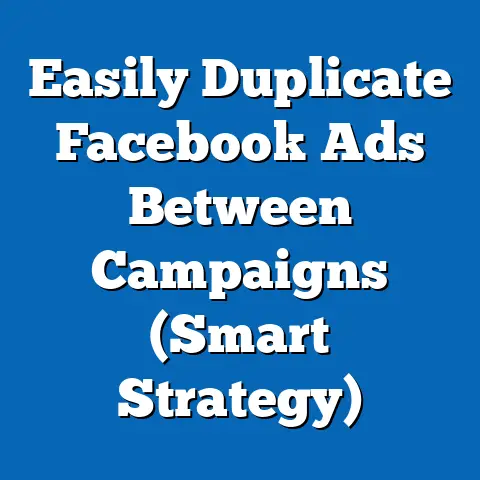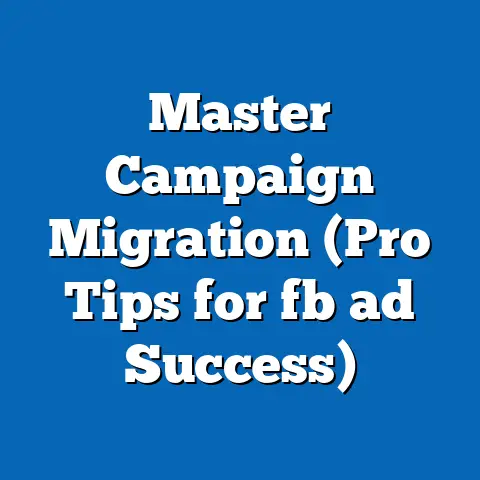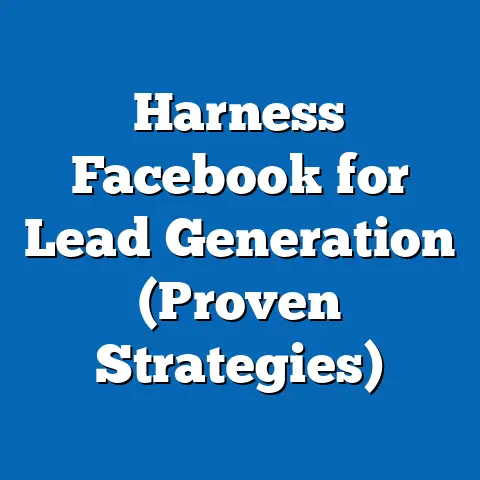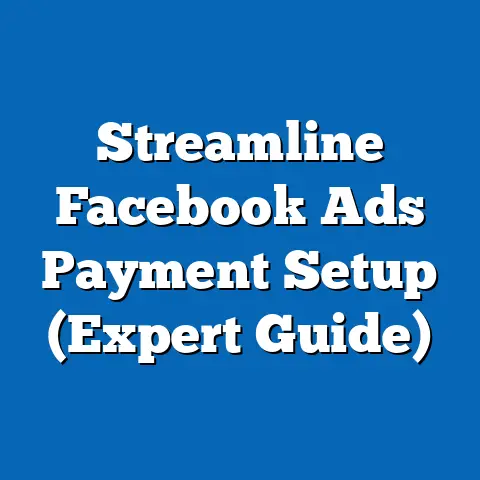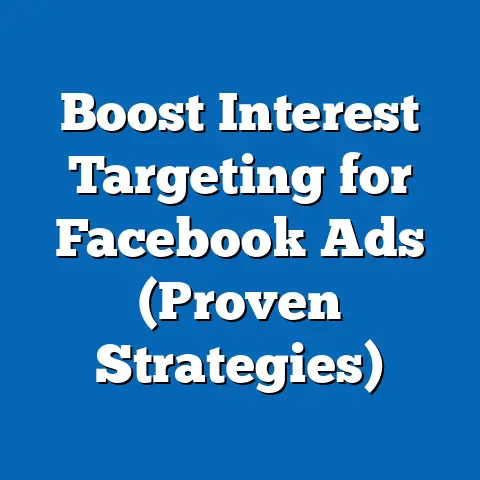Unlock Facebook Ad Library Strategies (Pro Tips Revealed)
As the leaves change and the air turns crisp, businesses gear up for the most crucial time of year: the holiday season. With consumers ready to spend, the competition for attention on social media is fierce, especially on platforms like Facebook. In this digital arena, wouldn’t it be amazing to peek behind the curtain and see what your competitors are up to? That’s where the Facebook Ad Library comes in!
I’ve spent years navigating the ever-changing landscape of Facebook advertising, and I can tell you that the Ad Library is a game-changer. It’s a goldmine of information that can help you understand your competitors’ strategies, identify trending ad formats, and ultimately, enhance your own ad campaigns. In this article, I’ll walk you through everything you need to know to leverage the Facebook Ad Library to its fullest potential, especially during peak seasons. We’ll cover the basics, dive into pro tips, and even look at real-world examples of successful seasonal campaigns. Get ready to unlock your advertising potential!
Understanding the Facebook Ad Library
So, what exactly is the Facebook Ad Library? Simply put, it’s a searchable database that provides transparency into all active ads running across Facebook and Instagram. It’s Facebook’s way of being more upfront about who is advertising what, and it’s an invaluable resource for marketers.
The Ad Library serves several important purposes. First and foremost, it promotes transparency. Anyone can use it to see what ads are running, who is running them, and where they are being targeted. This helps ensure that political and social issues ads are accountable and that advertisers are playing fair.
But beyond transparency, the Ad Library offers a wealth of information for marketers like you and me. You can see:
- Ad Creative: The actual image, video, or text used in the ad.
- Ad Copy: The written content accompanying the ad.
- Targeting: The demographics, interests, and behaviors the ad is targeting (though not specific details).
- Ad Spending: The estimated amount spent on the ad.
- Start Date: When the ad began running.
The significance of using the Ad Library to analyze competitors’ ads, especially during peak seasons, cannot be overstated. During high-stakes periods like Black Friday or Christmas, understanding what your competitors are doing is crucial for staying competitive and maximizing your ROI. It’s like having a backstage pass to their advertising strategy, allowing you to learn from their successes and avoid their mistakes.
Takeaway: The Facebook Ad Library is a powerful tool for transparency and competitor analysis. Use it to understand what ads are running, who is running them, and where they are being targeted.
Leveraging Seasonal Trends in Facebook Ads
One of the most effective ways to boost your Facebook ad performance is to align your ads with seasonal trends and consumer behaviors. People are naturally more receptive to messages that resonate with what’s happening in their lives, and seasonal advertising taps into that.
Seasonal trends can range from major holidays like Christmas, Easter, and Thanksgiving to more niche events like back-to-school season, summer sales, or even local festivals. Each of these trends presents a unique opportunity to tailor your ad strategies to match the mood and needs of your target audience.
For example, during the holiday season, consumers are actively searching for gift ideas, deals, and festive experiences. Adapting your ad copy and visuals to reflect this can significantly increase engagement. Think about using holiday-themed imagery, offering special discounts, or highlighting products that make great gifts.
The Ad Library can be an invaluable resource for discovering trending ad formats and messages that resonate during specific seasons. By searching for ads related to a particular season, you can see what types of creatives are performing well, what kind of language is being used, and what offers are being promoted.
Here are a few tips on how to adapt your ad copy and visuals to fit seasonal themes:
- Use Seasonal Imagery: Incorporate relevant imagery into your ads, such as pumpkins for Halloween, snowflakes for Christmas, or colorful flowers for spring.
- Craft Season-Specific Copy: Tailor your ad copy to reflect the season. Use words and phrases that evoke the feeling of the season and highlight relevant benefits.
- Offer Seasonal Promotions: Create special promotions that are only available during a specific season. This can create a sense of urgency and encourage people to take action.
- Highlight Relevant Products: Focus on promoting products that are particularly relevant during the season. For example, you might promote winter coats during the winter or swimwear during the summer.
Takeaway: Aligning your Facebook ads with seasonal trends can significantly boost performance. Use the Ad Library to discover trending ad formats and messages, and adapt your ad copy and visuals to fit seasonal themes.
Pro Tips for Navigating the Facebook Ad Library
Now that you understand the basics of the Facebook Ad Library and the importance of seasonal advertising, let’s dive into some pro tips that will help you get the most out of this powerful tool.
Tip 1: Search Filters and Categories
The Ad Library offers a variety of search filters that allow you to narrow down your results and find the information you’re looking for more quickly. Here’s how to use them effectively:
- Country: Filter ads by the country they are targeting. This is particularly useful if you’re running ads in multiple countries or want to see what ads are running in a specific region.
- Ad Status: Filter ads by their status (active or inactive). This can help you see what ads are currently running and what ads have been discontinued.
- Date Range: Filter ads by the date range they were running. This is helpful for tracking competitor performance over time and identifying seasonal trends.
In addition to search filters, the Ad Library also allows you to categorize ads based on their objectives. This can help you find ads that are focused on specific goals, such as:
- Brand Awareness: Ads designed to increase brand recognition and visibility.
- Conversions: Ads designed to drive sales or generate leads.
- Engagement: Ads designed to encourage likes, comments, and shares.
- App Installs: Ads designed to drive app downloads.
By using search filters and categories effectively, you can quickly find the ads that are most relevant to your needs and gain valuable insights into your competitors’ strategies.
Takeaway: Master the search filters and categories within the Ad Library to efficiently find the information you need and uncover valuable insights.
Tip 2: Competitor Analysis
One of the most valuable uses of the Ad Library is for competitor analysis. By identifying your top competitors and analyzing their ad strategies, you can gain a better understanding of the market and identify opportunities to improve your own campaigns.
Here’s a step-by-step guide to conducting a competitor analysis using the Ad Library:
- Identify Your Competitors: Start by identifying your top competitors in the same niche. You can do this by searching for relevant keywords on Facebook and seeing which brands are running ads.
- Search for Their Ads: Once you’ve identified your competitors, search for their ads in the Ad Library. You can do this by typing their brand name into the search bar.
- Analyze Their Ads: Take a close look at your competitors’ ads. Pay attention to the following:
- Ad Creative: What types of images and videos are they using?
- Ad Copy: What kind of language are they using? What offers are they promoting?
- Targeting: Who are they targeting with their ads?
- Ad Spending: How much are they spending on their ads?
- Track Their Performance Over Time: Track your competitors’ ad performance over time, noting any seasonal variations in their campaigns. This can help you identify trends and patterns that you can use to inform your own strategies.
- Ad Creative: What types of images and videos are they using?
- Ad Copy: What kind of language are they using? What offers are they promoting?
- Targeting: Who are they targeting with their ads?
- Ad Spending: How much are they spending on their ads?
By conducting a thorough competitor analysis, you can gain valuable insights into the market and identify opportunities to improve your own Facebook ad campaigns. I once used this method to discover that a competitor was heavily investing in video ads during the holiday season. I quickly adapted my own strategy to include more video content, resulting in a significant increase in engagement and conversions.
Takeaway: Use the Ad Library to conduct thorough competitor analysis, tracking their ad strategies and performance over time to identify opportunities for improvement.
Tip 3: Creative Inspiration
Stuck in a creative rut? The Ad Library can be a great source of inspiration for your own ad campaigns. By studying successful ad creatives from the Ad Library, you can get ideas for design elements, messaging, and calls to action that work well during different seasons.
Here’s how to use the Ad Library for creative inspiration:
Takeaway: Use the Ad Library to find creative inspiration for your own campaigns. Study successful ad creatives to identify design elements, messaging, and calls to action that resonate with your target audience.
Tip 4: Audience Insights
Understanding your target audience is crucial for creating effective Facebook ad campaigns. The Ad Library can help you gather insights on audience targeting by analyzing competitors’ ads and seeing who they are targeting.
Here’s how to use the Ad Library to gather audience insights:
- Identify Your Competitors’ Target Audiences: Look for clues in their ad copy and visuals. Are they targeting a specific age group, gender, or location?
- Analyze Their Interests and Behaviors: Pay attention to the interests and behaviors that your competitors are targeting. This can give you insights into the types of people who are most likely to be interested in your products or services.
- Test Different Targeting Options: Use what you’ve learned to test different targeting options in your own ad campaigns. Experiment with different demographics, interests, and behaviors to see what works best for you.
By gathering audience insights from the Ad Library, you can create more targeted ad campaigns that are more likely to reach the right people and generate results.
Takeaway: Use the Ad Library to gather insights on audience targeting by analyzing competitors’ ads and seeing who they are targeting.
Tip 5: Monitoring Ad Performance
Finally, it’s important to monitor the performance of your ads over time and adjust your campaigns based on performance metrics. The Ad Library can help you track the effectiveness of your ads and identify areas for improvement.
Here are a few strategies for monitoring ad performance using the Ad Library:
- Track Your Competitors’ Ads: Keep an eye on your competitors’ ads to see how they are performing. Are they still running the same ads, or have they made any changes?
- Analyze Your Own Ads: Track the performance of your own ads in the Ad Library. How many impressions are they getting? How many likes, comments, and shares are they generating?
- A/B Test Different Ad Creatives: A/B test different ad creatives to see which ones perform best. This can help you optimize your ads for maximum impact.
Remember, continuous optimization is key to success with Facebook advertising. By monitoring your ad performance and making adjustments as needed, you can ensure that your campaigns are always performing at their best.
Takeaway: Monitor your ad performance over time and adjust your campaigns based on performance metrics. Use A/B testing to optimize your ads for maximum impact.
Section 4: Case Studies of Successful Seasonal Campaigns
Let’s take a look at a couple of case studies of brands that have successfully utilized the Facebook Ad Library to inform their seasonal campaigns:
Case Study 1: A Local Bakery’s Holiday Push
A local bakery wanted to increase sales during the holiday season. They used the Facebook Ad Library to research what other bakeries in the area were doing. They noticed that many bakeries were running ads featuring festive cakes and cookies, with a focus on gift-giving.
Based on this research, the bakery created their own ad campaign featuring a variety of holiday-themed treats. They used high-quality photos of their products and crafted ad copy that emphasized the convenience of ordering online and the joy of giving delicious gifts. They also targeted their ads to people who had expressed an interest in baking, cooking, or local businesses.
The result? The bakery saw a significant increase in sales during the holiday season, exceeding their initial projections. They attributed their success to the insights they gained from the Facebook Ad Library, which helped them create a more targeted and effective ad campaign.
Case Study 2: An E-Commerce Store’s Back-to-School Campaign
An e-commerce store that sells school supplies wanted to increase sales during the back-to-school season. They used the Facebook Ad Library to research what their competitors were doing. They noticed that many stores were running ads featuring discounts on backpacks, notebooks, and other essential school supplies.
Based on this research, the e-commerce store created their own ad campaign featuring a variety of back-to-school essentials. They offered a special discount for first-time customers and targeted their ads to parents with children in school. They also used eye-catching visuals and crafted ad copy that emphasized the convenience of shopping online and the importance of being prepared for the new school year.
The result? The e-commerce store saw a significant increase in sales during the back-to-school season, outperforming their competitors. They credited their success to the insights they gained from the Facebook Ad Library, which helped them create a more compelling and targeted ad campaign.
Takeaway: These case studies demonstrate the power of the Facebook Ad Library to inform seasonal marketing campaigns. By researching your competitors, identifying trends, and adapting your strategies accordingly, you can significantly increase your chances of success.
Conclusion
In conclusion, leveraging the Facebook Ad Library is essential for creating effective seasonal marketing strategies. By understanding your competitors, adapting to trends, and continuously optimizing your campaigns, you can significantly enhance your ad effectiveness and achieve your marketing goals. I’ve seen firsthand how this tool can transform a campaign, turning potential failures into resounding successes.
So, don’t wait! Start exploring the Ad Library today and implement the pro tips shared in this article to unlock your advertising potential this season. The insights are there for the taking; all you need to do is start digging.
Call to Action
Now, I’d love to hear from you! Have you used the Facebook Ad Library before? What are some of your favorite tips and tricks? Share your experiences in the comments below! And if you found this article helpful, be sure to subscribe to my blog for more insights on digital marketing and Facebook advertising strategies. Let’s unlock our advertising potential together!

